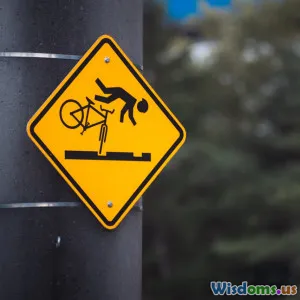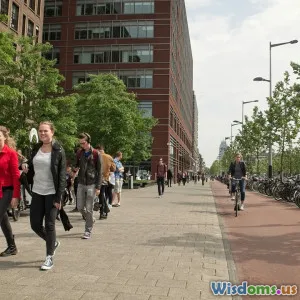
Navigating Public Transport in Foreign Cities
5 min read Master the art of using public transport abroad with practical tips and insights. (0 Reviews)
Navigating Public Transport in Foreign Cities
Traveling to a foreign city can be an exhilarating experience, filled with the prospect of exploring new cultures, cuisines, and landscapes. One of the best ways to immerse yourself in a new environment is by using public transport. It allows you to experience the daily life of locals and can be remarkably cost-effective. However, navigating public transport in an unfamiliar setting can also be daunting. Here are some practical tips and insights to help you confidently traverse foreign transit systems.
Understanding the Local Transport System
Before you embark on your journey, take some time to research the local transport system. Here are some key aspects to consider:
1. Types of Public Transport
- Buses: Most cities have an extensive bus network. Buses can be slower but are often the most economical option.
- Subways/Metro: Fast and efficient, subways are especially useful in large cities. Familiarize yourself with the subway map and peak hours.
- Trams: Some cities, like Melbourne and Amsterdam, rely heavily on trams. Understanding their routes can help you navigate more easily.
- Taxis and Ridesharing: In some cases, taxis or rideshare services like Uber may be preferable, especially late at night or in areas with limited public transport.
2. Researching Routes and Schedules
- Use apps like Google Maps or local transport apps to find routes and check schedules.
- Look for real-time updates, especially for buses and trams, to avoid long waits.
3. Buying Tickets
- Familiarize yourself with the ticketing system. Some cities use physical tickets, while others operate on a contactless card system.
- Consider purchasing a day pass if you plan to use public transport multiple times in a day.
Essential Apps for Navigating Public Transport
Technology can be your best friend when it comes to navigating public transport. Here are some must-have apps:
- Citymapper: Excellent for urban public transport, providing real-time data and route planning.
- Transit App: Offers real-time arrival information for buses and trains and is user-friendly.
- Local Transport Apps: Many cities have their own apps that provide specific information about routes and schedules.
Tips for a Smooth Experience
1. Learn Basic Local Terms
- Familiarize yourself with key transport-related terms in the local language. Knowing how to ask for directions or understand signage can make a significant difference.
2. Stay Aware of Your Surroundings
- Keep your belongings secure and stay alert, especially in crowded areas. Pickpocketing can occur in busy transit systems.
3. Travel During Off-Peak Hours
- If possible, avoid rush hours. Traveling during quieter times can make your journey more pleasant and less stressful.
4. Ask Locals for Help
- Don't hesitate to ask locals for assistance. Most people are happy to help visitors navigate their city's transport system.
Conclusion
Navigating public transport in foreign cities may seem intimidating, but with a bit of preparation and the right mindset, you can transform it into an enriching experience. Not only does it save you money, but it also offers a unique glimpse into the daily lives of locals. Embrace the adventure and remember that getting lost can sometimes lead to the most memorable experiences.
Happy travels!
Rate the Post
User Reviews
Popular Posts





















